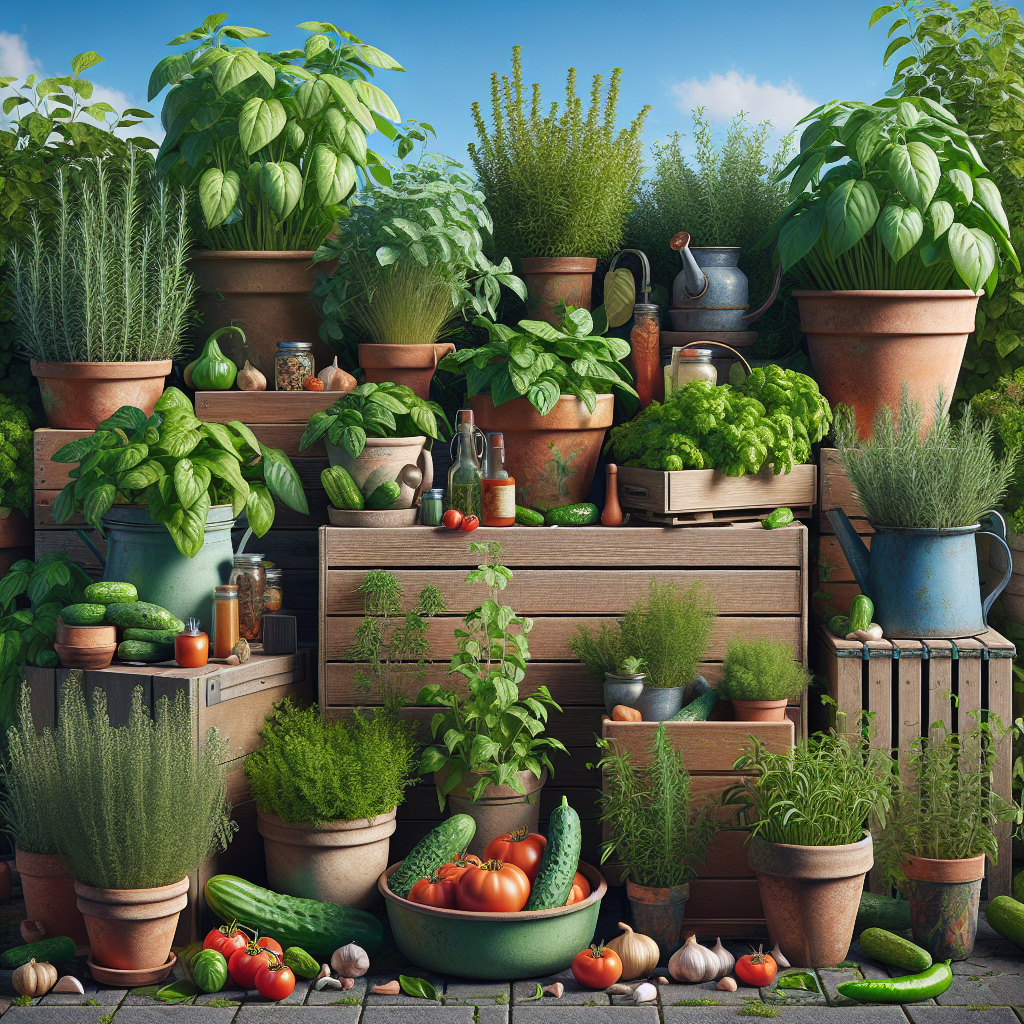Growing Herbs and Vegetables in Containers
With the rise of urban gardening and limited outdoor space, growing herbs and vegetables in containers has become a popular and practical solution for many people. Whether you live in an apartment with a tiny balcony or a house with a small backyard, container gardening allows you to grow your own fresh produce right at home. Not only does it provide easy access to fresh herbs and vegetables, but it also adds beauty to your outdoor space and helps reduce your carbon footprint by reducing the need for store-bought produce that has traveled long distances. In this article, we will discuss the benefits of growing herbs and vegetables in containers, the best containers to use, suitable plants for container gardening, as well as tips for successful container gardening.
Benefits of Growing Herbs and Vegetables in Containers
There are numerous benefits to growing herbs and vegetables in containers. One of the most significant advantages is that container gardening allows you to grow your own fresh produce even if you have limited outdoor space. By using containers, you can create a mini garden on a balcony, patio, deck, or even windowsill. This means that anyone can enjoy the satisfaction of growing their own food regardless of where they live.
Container gardening also offers greater control over the growing conditions of your plants. You can easily move your containers around to ensure they receive the optimal amount of sunlight, water, and nutrients. This flexibility is particularly useful in urban environments where outdoor spaces may be shaded or have limited sun exposure.
Another benefit of container gardening is that it reduces the risk of pests and diseases affecting your plants. By growing herbs and vegetables in containers, you can prevent soil-borne diseases from spreading to other plants in your garden. Additionally, you can protect your plants from pests by placing them at a height where they are less likely to be attacked by insects.
Best Containers for Growing Herbs and Vegetables
When choosing containers for growing herbs and vegetables, there are several factors to consider. The size of the container will depend on the size of the plant you wish to grow. Larger plants such as tomatoes or peppers will require larger containers with a minimum depth of 12 inches. On the other hand, smaller plants like herbs or lettuce can thrive in pots as small as 6 inches deep.
It is essential that your containers have drainage holes at the bottom to prevent waterlogging which can lead to root rot. If your container does not have drainage holes, drill some holes yourself using a sharp tool. Additionally, make sure to place saucers under your pots to catch excess water runoff.
The material of the container is also crucial for successful container gardening. Clay pots are popular due to their attractive appearance but tend to dry out quickly so they require more frequent watering. Plastic pots are lightweight and retain moisture better than clay pots but may not be as aesthetically pleasing.
Suitable Plants for Container Gardening
Not all herbs and vegetables are suitable for container gardening due to their size or growth requirements. However, there is still a wide variety of plants that thrive in containers including:
– Herbs such as basil, mint, parsley, cilantro
– Leafy greens like lettuce, spinach
– Tomatoes
– Peppers
– Cucumbers
– Eggplants
– Radishes
– Strawberries
These plants are well-suited for container gardening because they do not require an extensive root system or large amounts of space between plants.
Tips for Successful Container Gardening
To ensure success with your container garden follow these tips:
1) Choose a good quality potting mix specifically designed for container gardening which provides proper drainage.
2) Regularly water your plants as containers tend to dry out faster than traditional soil.
3) Fertilize your plants regularly with an organic liquid fertilizer.
4) Rotate your pots regularly so that all sides receive sufficient sunlight.
5) Monitor plant health regularly by checking leaves for signs of disease or pests.
6) Harvest regularly by picking fruits or pruning herbs which encourages new growth.
In conclusion, growing herbs and vegetables in containers is an excellent way to enjoy fresh produce at home even if you have limited outdoor space available. Container gardening offers numerous benefits including increased control over growing conditions while reducing pest and disease risks compared with traditional garden beds.
Whether you’re looking to grow fresh basil on your windowsill or cultivate tomatoes on your balcony; there’s something incredibly satisfying about harvesting food grown from scratch! So why not give it go – experiment with different types of crops; find what works best given where live (climate-wise), how much light/water access have etc then start planting seeds today! With patience dedication will soon reap rewards plenty green goodness straight doorstep…













